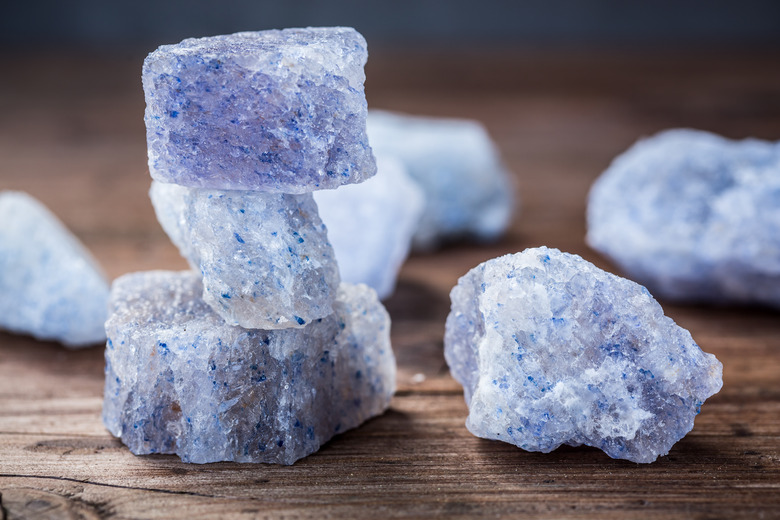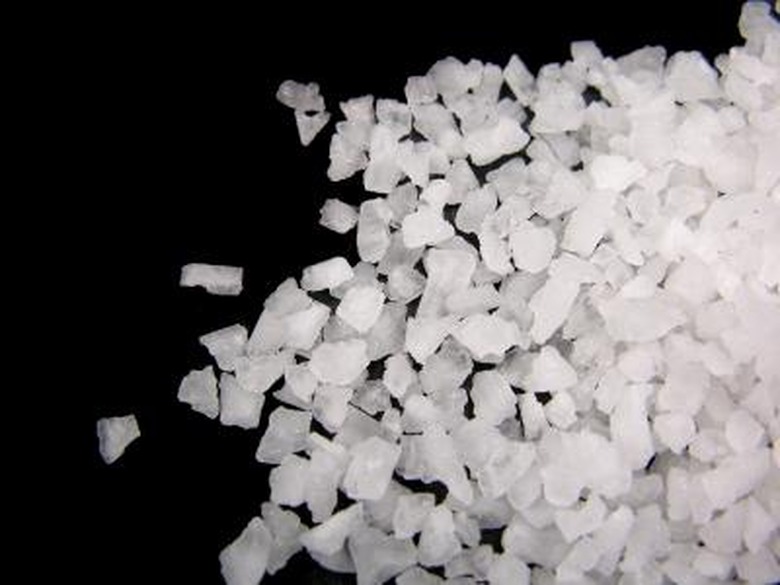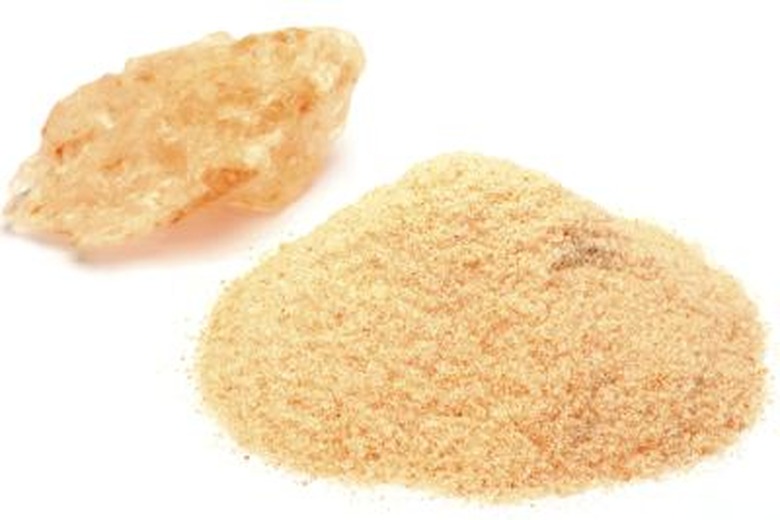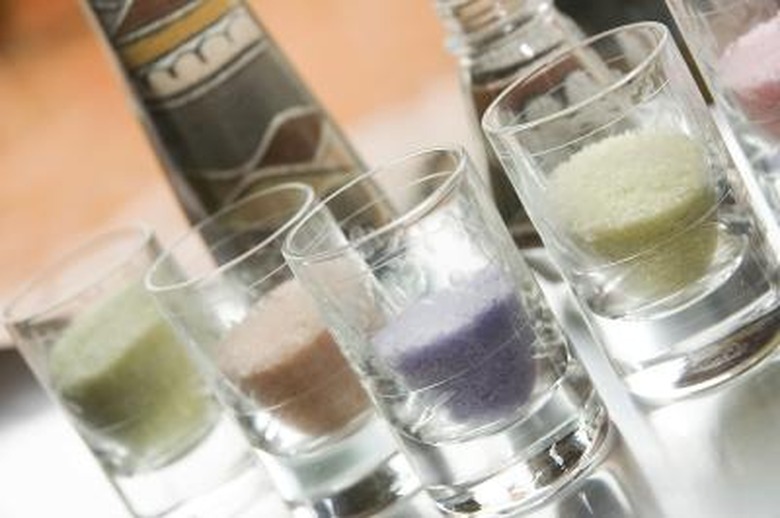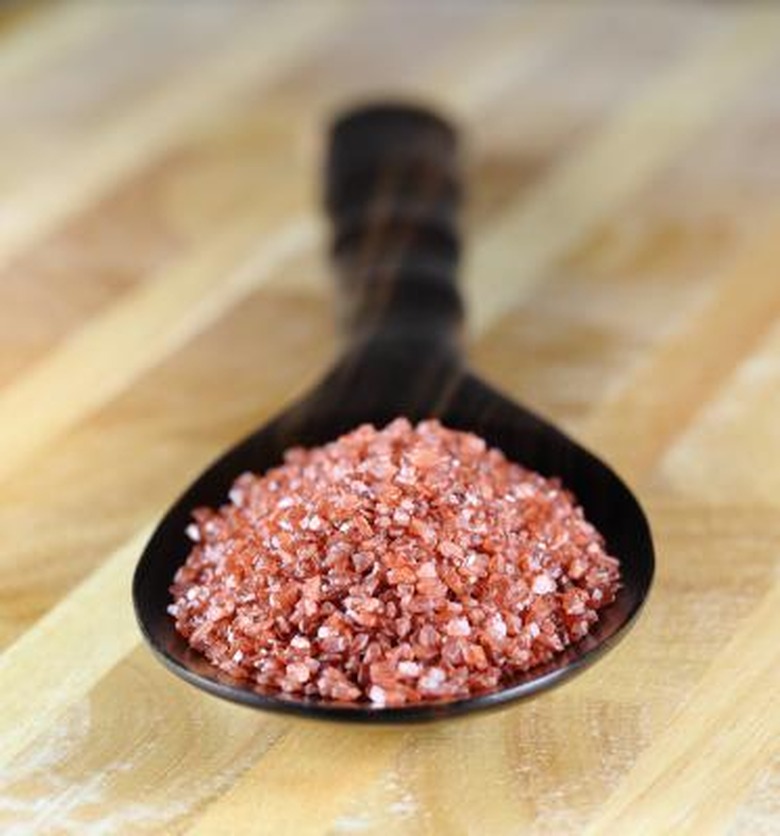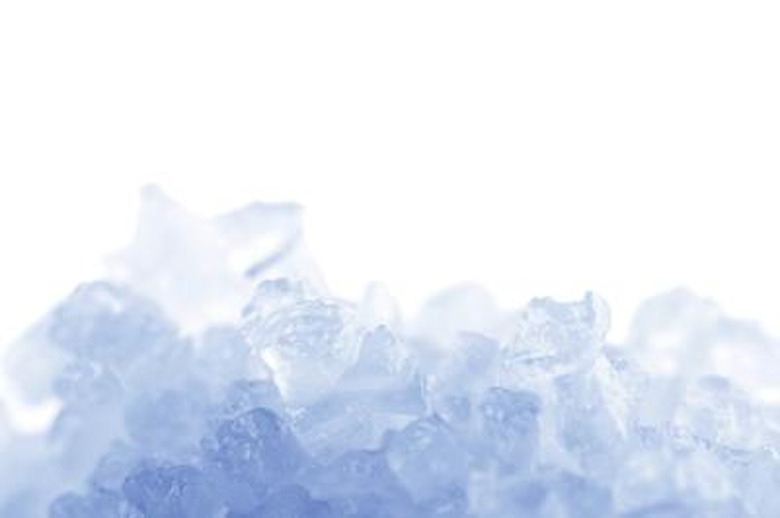Five Examples Of Salts For Science Class
The tiny white crystalline substance you sprinkle on your french fries is just one example of what chemists refer to as salts. In fact, any ionic molecule made of an acid and a base that dissolves in water to create ions is a salt. While salts are usually neutral, when they are dissolved in water, they can create an acidic or basic solution, depending on which of the component ions is stronger. If the ions are the same strength, the solution is neutral.
TL;DR (Too Long; Didn't Read)
Salts are always named by listing the acidic ion, or cation, first. The base ion, or anion, is listed second. Table salt, for example, is called sodium chloride (NaCl).
Sodium Chloride
Sodium Chloride
Sodium chloride (NaCl) is the most common type of salt in our lives. Known as table salt, it forms a cubic lattice when it's in solid form. It's one of the safest materials you can use in a chemistry class or kitchen.
The Na+ cation is an acid because it's an electron pair acceptor. However, it's an extremely weak acid due to its large radius and low charge. You may recognize the Cl- anion as being part of hydrochloric acid (HCl). The charge of the Cl- ion is so weak, it's practically neutral. When dissolved in water, sodium chloride creates a neutral solution.
Potassium Dichromate
Potassium Dichromate
Potassium dichromate (K2Cr2O7) is an orange-colored salt composed of potassium, chromium and oxygen. Not only is it toxic to humans, it's also an oxidizer that is a fire hazard. Potassium dichromate should never be thrown away. Instead, it should be washed down the drain with a lot of water. Always use rubber gloves when working with this compound. If you spill a potassium dichromate solution on your skin, it gives you a chemical burn. Keep in mind that any compound with chromium in it is a potential carcinogen.
Calcium Chloride
Calcium Chloride
Calcium chloride (CaCl2) resembles table salt in its white color. It is widely used to remove ice from roads. It's more effective than sodium chloride as a deicer, because calcium chloride produces three ions, while calcium chloride produces only two. Calcium chloride can melt ice down to minus 25 F, as much as 10 degrees lower than for sodium chloride. Calcium chloride is so hygroscopic, which is the ability to absorb water, that if you leave it in a room uncovered, it can absorb enough water from the air to dissolve into a solution all on its own.
Sodium Bisulfate
Sodium Bisulfate
Sodium bisulfate (NaHSO4) forms from sodium, hydrogen, sulfur and oxygen. It is created from sulphuric acid and retains one of the acid's hydrogen ions, which gives this salt acidic qualities. Known as a dry acid, sodium bisulfate is used in commercial applications, such as reducing the pH level of spas and swimming pools, washing concrete and cleaning metals. In its solid form, sodium bisulfate forms white beads. This salt is poisonous and can damage your skin, so use rubber gloves when handling it. If ingested, call the poison control center immediately and do not induce vomiting.
Copper Sulfate
Copper Sulfate
Copper sulfate (CuSO4) is a blue salt made up of copper, sulfur and oxygen. When dissolved in water, it becomes colorless. If you dip an iron object in a copper sulfate and water solution, the iron soon takes on a red coloring. This is a film of copper, due to a chemical reaction between the solution and the iron. The same reaction causes iron to replace the copper in the solution, forming iron sulfate.
Cite This Article
MLA
Weedmark, David. "Five Examples Of Salts For Science Class" sciencing.com, https://www.sciencing.com/five-examples-salts-science-class-6098860/. 27 April 2018.
APA
Weedmark, David. (2018, April 27). Five Examples Of Salts For Science Class. sciencing.com. Retrieved from https://www.sciencing.com/five-examples-salts-science-class-6098860/
Chicago
Weedmark, David. Five Examples Of Salts For Science Class last modified August 30, 2022. https://www.sciencing.com/five-examples-salts-science-class-6098860/
